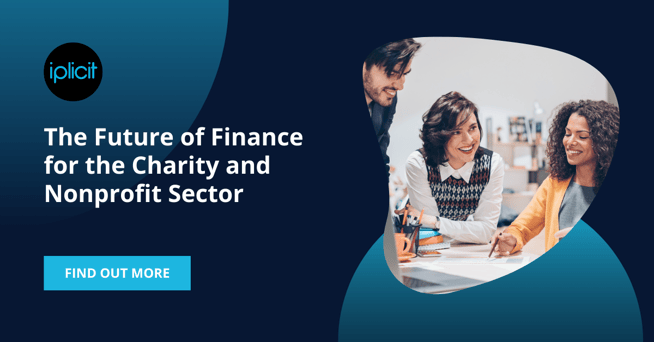In our recent webinar on the topic of Digital Transformation for Non-Profits, Keith Collins, Principal Consultant at Adapta Consulting shared the four key steps to digitalising a nonprofit organisation.
Step 1: Remember who you are thinking about
“That first step is to remember that everything digital, first and foremost, should be viewed through an external lens,” says Keith.
“Who is it that you are serving? Who is it that raises funds for you? Who is it that benefits from your services? Who is it that's participating in your activities?”
He advocates writing a persona document, showing the interests and motivation of a typical supporter, along with the “journey” they take when they interact with the charity. It would show how they discovered the organisation, how they interact with it on social media and how they go on to get more closely involved.
A lot of data will have been created in different places, often outside core business systems, he says. Digital transformation involves joining much of that information to generate new insights – for example, bringing together finance and customer relations management (CRM) data.
Step 2: Think about why you are doing this
“There is a school of thought that says organisations need digital strategy in the same way they need an electricity strategy – i.e. they don’t need it; it should be baked into everything you do strategically,” says Keith.
“Working out how any particular digital project – whether it's a new website, a new finance system, a new learning management system – is going to contribute to your strategic objectives is absolutely vital.
“There is certainly an opportunity with finance systems in particular for those digital solutions to help you become more efficient and make the most of the resources you have to reach more people and improve your business processes.”
To know where to start, it’s important to identify strategic objectives and weigh any digital project against those objectives, says Keith.
It can be helpful to plot digital projects on a graph. One axis represents a project’s benefits – its contribution to strategic objectives, efficiency or income. The other axis measures risk, cost and complexity. A project that scores highly for benefits and low for risk will be the one to do first.
Step 3: What have you got at the moment?
“It is dangerous to assume that your technology can support this brave new world,” says Keith.
He says it’s common that “front end” products used by the supporter will be in better shape than internal systems.
"The digital tools – the websites, the portals, the digital marketing tools – were often introduced more recently and are solutions built with more modern processes and the customer in mind, much more engaging for people to use.
“The back-end data and digital business systems might be somewhat more ramshackle,” he says.
“CRM systems in charities in particular often come from the late 1990s,” he adds, while old finance systems often need replacing with more modern software.
Step three, he says, can involve saying: “Actually, the digital tech tools we have at the moment might not be fit for purpose We may need to do some building work.”
Step 4: Think about digital from every angle
This is the process of considering digital from every perspective – including those of customers and employees – before executing the project.
For a simplified approach to digital transformation, Keith suggests these key stages:
- Align: This is where you think about your audiences and what they do.
- Review: This means considering issues such as data and technology, skills and resources, budgets, governance and culture – as well as the “unknown unknowns” that a consultant may be able to flag up.
- Envision, organise and implement: This is the process of designing, building and executing your chosen project.
Generally, it’s important to have an “outside-in” mindset, reflecting on how the customer will be affected – but Keith says there are key exceptions.
“Although we would say that thinking about a digital transformation project from an external perspective is absolutely integral to it, there will be digital projects that need to be thought about more from an internal business perspective,” he says.
“Finance systems in particular are the kind of tools that do require an internal business process compliance mindset.”
The opportunities of digitising the finance operation
Keith highlights the benefits to be had from digitising the finance system in particular:
- Automating business processes and workflows/approvals
- Providing self-service for budget holders
- Improved access to management information
- Easier reporting and better quality information
- Simplification with a cloud-based infrastructure.
When Adapta comes up with a three-year road map for clients, the finance system is often high up the agenda.
“It’s usually systems like finance system projects, or maximising the use of office productivity suites, that are identified as projects they can get to grips with more quickly and get benefit from quite quickly,” Keith adds.
Learn more about digital finance transformation for nonprofits
Watch the on-demand webinar or, find out more about how iplicit’s charity accounting software helps charities become more efficient and saves time getting the granular reporting needed to make better decisions. Or book a demonstration.
About Adapta Consulting
Adapta is a specialist consultancy providing charities, membership organisations and other not-for-profit organisations with tailored, independent advice to help them become more effective through improved processes, people and technology. Find out more about Adapta Consulting.
iplicit is empowering nonprofit organisations around the world to take control of their finance operations and focus on what really matters. iplicit can help you upgrade with a number of solutions to support with accounting software for charities.
Download iplicit's toolkit for Nonprofits


